Baby, it’s COLD outside

On Boxing Day I received an urgent text. It read, “I need you.”
Several photos followed.
The temperature outside was -34 C, and had been for a few days. This customer’s plant had become a scientific demonstration of the power of water when it turns to ice.
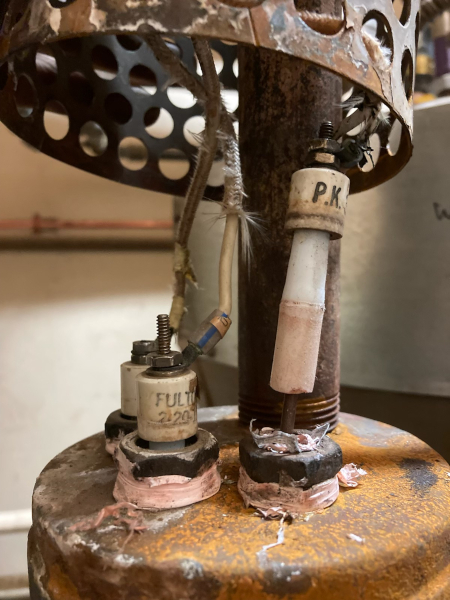
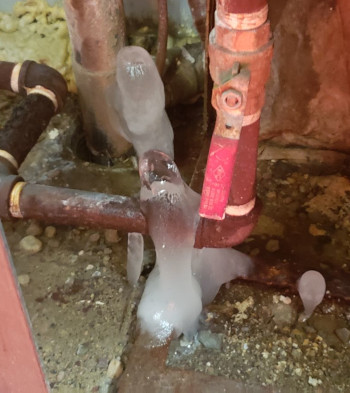
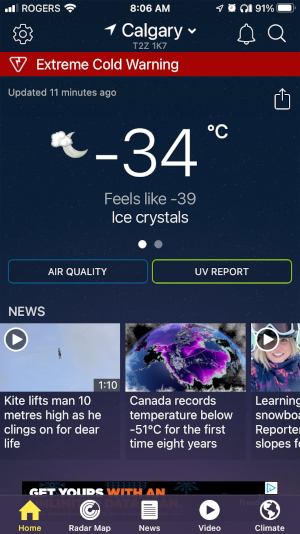
It seems that every plant owner experiences this at least once. Our office manager, Paula, even puts a notice on our statements in December – ‘Don’t forget to put an electric heater in your boiler room’ – but somehow it doesn’t help. This is a problem that all Canadian dry cleaners face. If you don’t keep the cold out, things will freeze.
The Problem
The problem may be a frozen pipe, the water pump, or even the boiler itself. Fulton boilers are good at retaining heat so they are usually the last thing to freeze. Often it is a pipe that is close to the floor – where it is colder.
Sometimes we hear, “It was just a frozen pump. It’s no problem. I just thawed it out with my torch.” Unfortunately, when the pump freezes, the brass end-plate distorts just enough so that it leaks a little and it doesn’t develop as much pressure any more.
The main concern with frozen piping is the brass valves. They may appear OK, but they, too, could have been stretched. There was a fellow killed in Red Deer a few years back when a frozen valve split. It held together long enough for the boiler to come up to pressure. When he tried to blowdown the boiler, it came apart. He died a few days later from the steam burns.
Pipes, and especially valves, need to be properly inspected and even hydro-tested. If the boiler itself has frozen, you will have to fill out an accident report, and then have the boiler hydro-tested and inspected by the boiler inspector.
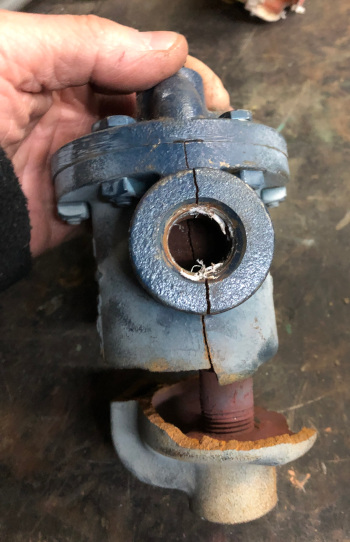
Sometimes the problem is not in the boiler room. It’s in the back of the plant – near the door or a window. There is a draft, and before you know it you have a frozen pipe or even a frozen steam trap. Steam traps are thick cast iron, but they still crack. They always hold some water, so they will freeze if given the chance.
The Cause
So how can freezing water break something strong like steel? Most substances shrink in volume as they get colder. Water is different. From 4°C down to 0°C, water expands about 9%. Ice floats because it is less dense. Water expands when it freezes and can cause tremendous damage.
You need to keep the cold out of your boiler room. The biggest culprit in this situation is usually the combustion air duct. Boilers burn gas so they need air for combustion. Your fresh air duct lets air into the boiler room. When the boiler is running, there is enough heat to prevent problems. When the boiler is off, the cold takes over. Most people cover or close that air duct at night.
DO NOT COVER THE COMBUSTION AIR DUCT WHEN THE BOILER IS RUNNING. You could end up with carbon monoxide in the building. Many people have been hurt or killed by carbon monoxide.
The Cure
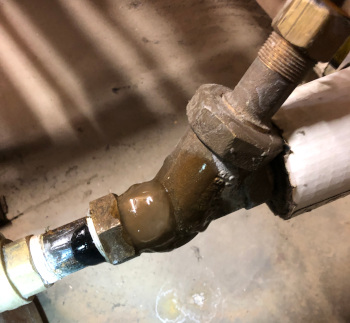
There is a simple 3-step way to prevent frozen pipes on those long, cold weekends.
#1 Drive to the plant.
#2 Turn on the boiler.
#3 Have a coffee.
That’s all you have to do. $10 worth of gas is a lot cheaper than a visit from me!
One thing I don’t understand is plants that don’t have a furnace. The only source of heat is the boiler. Every day when you close the plant, you start the countdown to frozen pipes. Without a furnace, you have to be there every day. Either you or the landlord needs to buy a furnace to protect the place on weekends.
The second choice after a furnace is a backup electric heater. Home Depot has them for $50. Buy the one with a thermostat. That way you can leave it turned on all the time. It only runs when it gets cold. It is always there ready to protect you. If it doesn’t turn on, it doesn’t use any power.
Some people are concerned about causing a fire with the electric heater. So, remove all the combustibles. If the heater is on a concrete floor blowing at steel pipes, it should not be a problem. Furnaces sometimes fail. An electric heater is cheap insurance.
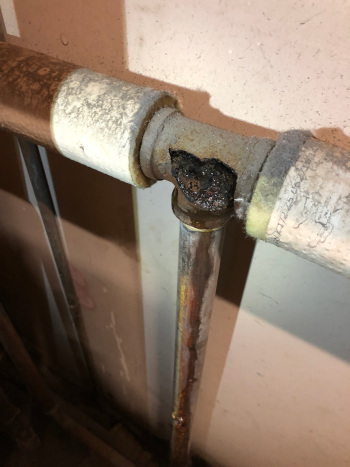
Conclusion
There is only one thing worse than freezing the pipes in your plant. Freezing them three times in one winter. Yes, it’s true. One client did it three times! First of all, they didn’t have an electric heater. They got one, but someone forgot to plug it in. The third time someone forgot to cover the fresh air vent at night. The wind blew in and they had instant frozen pipes.
We are glad to help out, but this is really not the way we want to make a living. When pipes freeze and you call your repair person, you spend a lot of money, but you haven’t improved anything. We have just repaired the damage to get you back to where you were.
So on the next cold weekend, you can go to the plant and have a coffee or I can visit your plant and then I can afford a coffee (and some steak…). It’s your choice.






